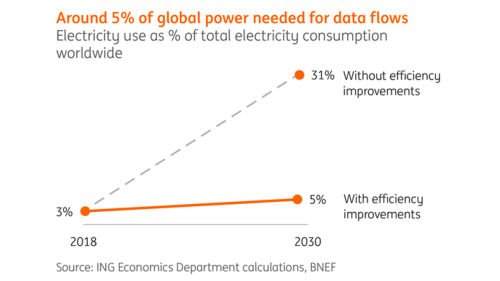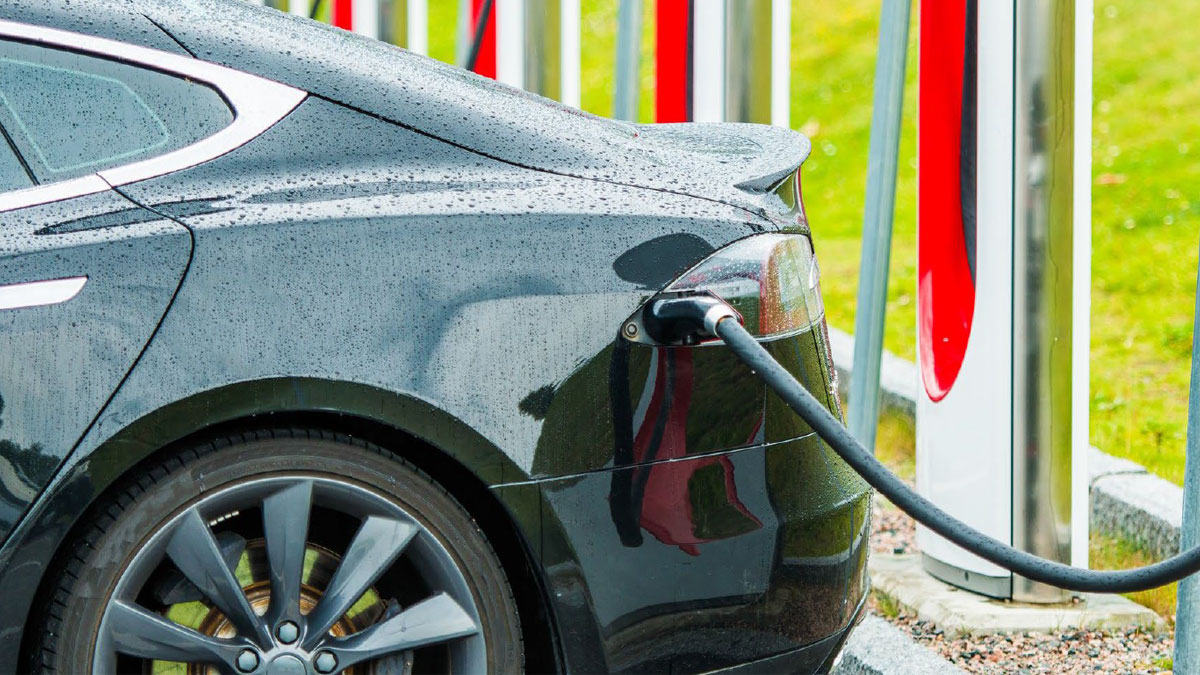Data-driven electricity use to double by 2030
While most of the focus is on limiting emissions from sectors like aviation, automotive and energy, it’s data-driven electricity that’s likely to have a serious impact on global emissions goals. New research from ING finds that even with energy efficiency improvements, data-driven electricity will double by 2030, accounting for 5% of the world’s electricity consumption.

The communications and technology industry, including video, voice, internet and cloud services, produces about 2% of global CO2 emissions – the same carbon footprint as the aviation industry.
“A strong rise in electricity use seems inevitable, given the huge growth in data. One of the biggest issues ING sees is the knock-on effect that this additional use of electricity could have on our global carbon emissions footprint,” said Marten van Garderen, senior economist at ING.

Efficiency-increasing innovations are key in limiting the electricity needed for growing data flows. Without them, the share of data in global power use would rise to more than 30%, having a serious impact on global emissions goals.
ING attributes the rise in data use to the increase in internet availability, traffic per user, connected devices and cloud services – with cloud data increasing 20 times between 2018 and 2030.



